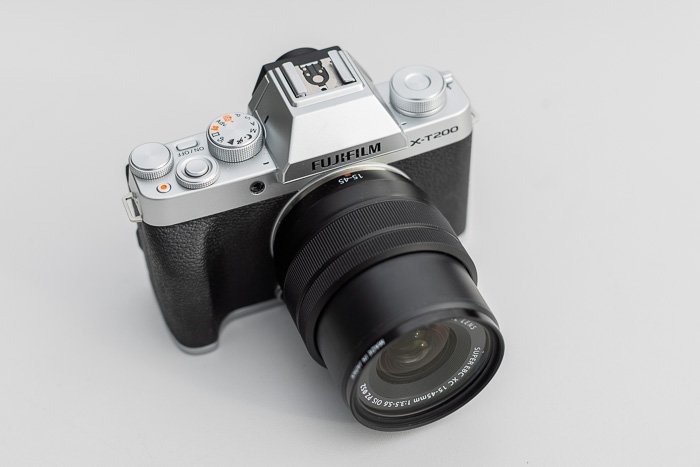If you’re looking for a quality Fujifilm camera to take amazing photos, we have a few for you to consider. With a wide variety of models, one will surely be perfect for your needs. There are hybrid cameras for photos and video or more niche cameras for street or travel photography.
Our top pick is the Fujifilm X-T5. It is an APS-C camera, but it combines a large megapixel count with a compact body and excellent AI autofocus tracking. The X-H2 is best for video, and the GFX100S is the best medium-format camera for professionals.
What Is the Best Fujifilm Camera?
We’ll look in more detail at our top choices. But first, here is a summary of the cameras we recommend.
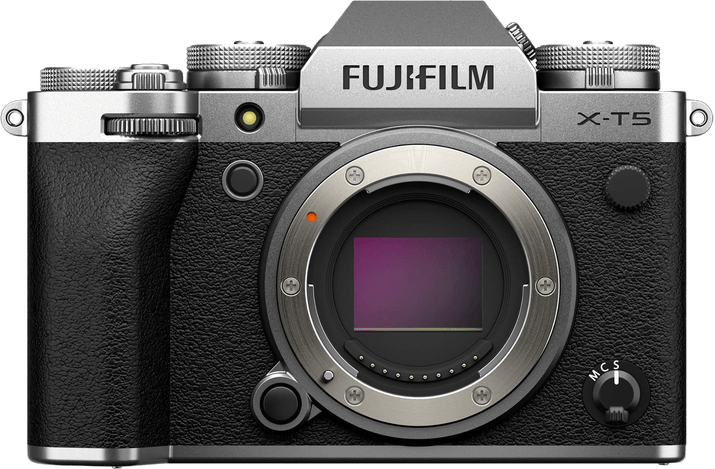
- Incredible 40.2 MP APS-C sensor
- AI identifies and tracks moving subjects
- Built-in 5-axis image stabilization
- Pixel Shift Multi-Shot mode for higher resolutions
- 6.2K video, long-lasting battery, and weather sealing
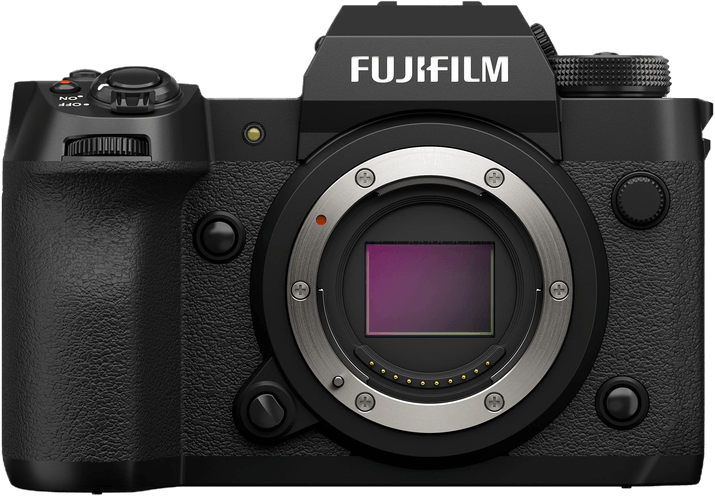
- Powerful 40.2 MP APS-C sensor
- Built-in 5-axis image stabilization
- Pixel Shift mode for 160 MP images
- 8K cinematic video at 30 fps
- 4K recording at 60 fps and Full HD at 240 fps
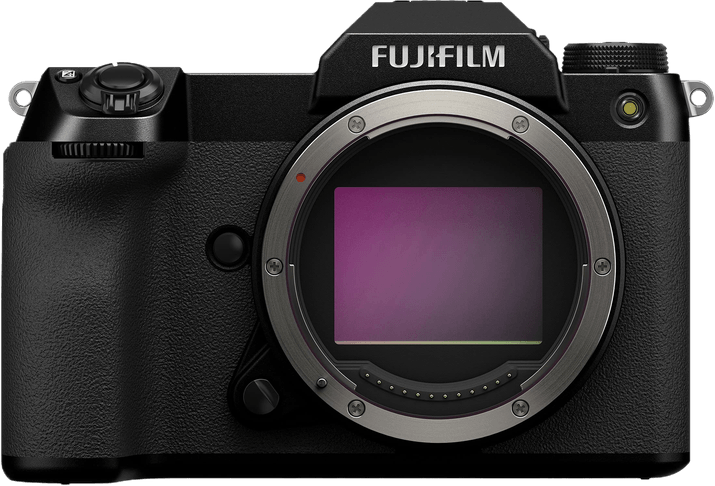
- 102 MP for excellent image quality
- Excellent autofocus and color handling
- Image stabilization up to 6 stops
- Remarkably light for a medium format camera
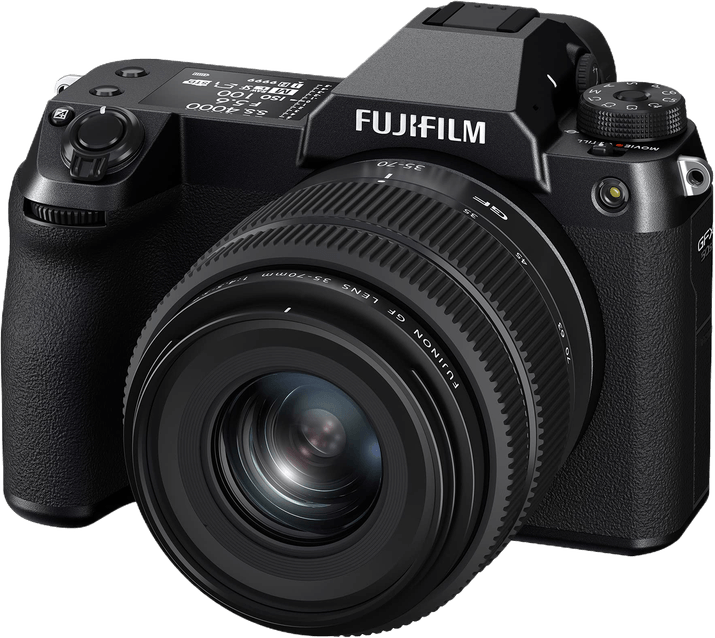
- Compact 51.4 MP medium-format camera
- 6.3 stops of image stabilization for low light
- Pixel Shift Multi Shot mode for 200 MP images
- 6 types of auto bracketing
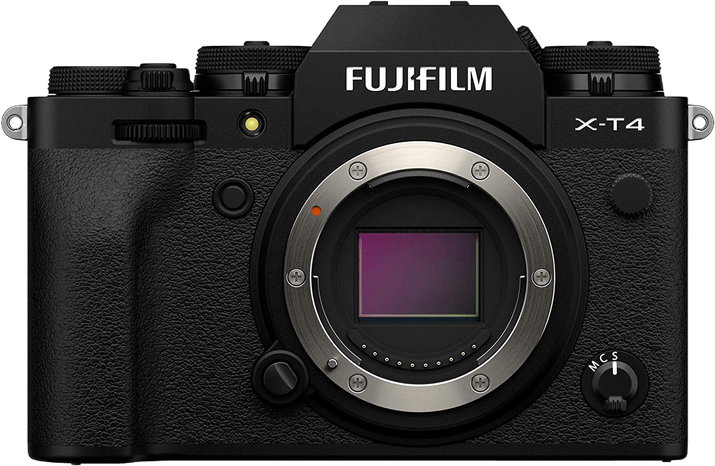
- Fast autofocus capabilities
- 5-axis image stabilization
- 4K video up to 60 fps
- Fully articulating rear touchscreen
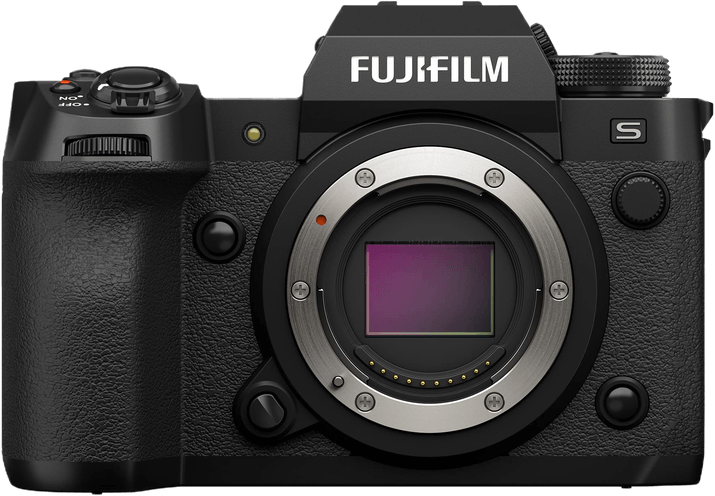
- 40 fps black-out free burst mode
- Subject-detection modes
- Excellent in-body image stabilization
- Dual card slots and weather sealing
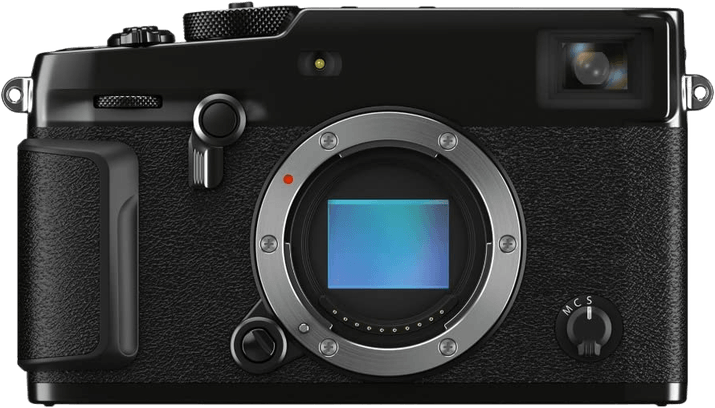
- 26 MP APS-C sensor
- Film simulation modes
- 4K video and fully articulating screen
- Superb hybrid optical/electronic viewfinder
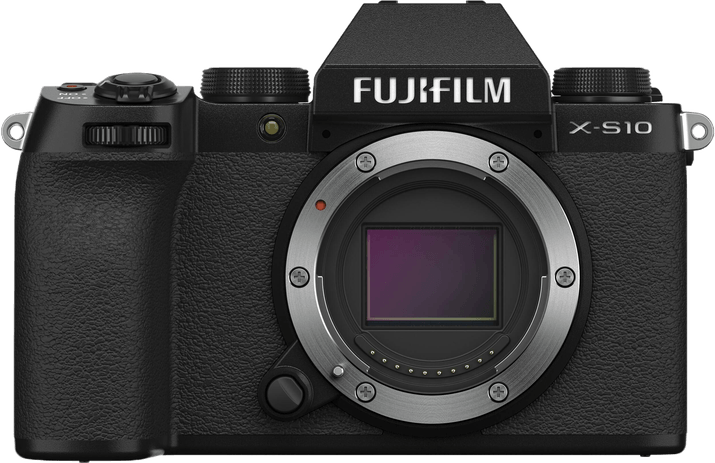
- Autofocu face and eye-detection
- 4K video recording
- Lightweight for on-the-go vloggers
- Connect via Wi-Fi and Bluetooth

- 26 MP APS-C sensor
- Fast, sharp f/2 lens
- Classic design and full manual mode
- Versatile hybrid optical/electronic viewfinder
9 Best Fujifilm Cameras
Now let’s look in more detail at those cameras. Let’s start with the top pick.
1. Fujifilm X-T5

| Brand |
Brand
Fujifilm
|
| Sensor Format |
Sensor Format
|
| Lens Mount |
Lens Mount
Fujifilm X
|
| Megapixels |
Megapixels
40 MP |
| In-body Stabilization |
In-body Stabilization
|
| Autofocus Points |
Autofocus Points
425 |
| Minimum ISO (Native) |
Minimum ISO (Native)
125 |
| Maximum ISO (Native) |
Maximum ISO (Native)
12,800 |
| Frame Rate |
Frame Rate
15 fps |
| Video |
Video
|
| Screen Size |
Screen Size
|
| Best For |
Best For
Anyone looking for a stylish mirrorless camera with advanced photography and video features
|
The Fujifilm X-T5 could be the best APS-C mirrorless camera on the market. It’s one of Fujifilm’s latest cameras. And it’s one of their best ever. It has the classic retro look we expect from Fujifilm cameras. But it’s also packed with the latest tech.
Thanks to the APS-C sensor, the X-T5 is compact and lightweight. But Fujifilm has also been able to increase the power.
The sensor has an image resolution of 40.2 MP. That’s sensational for an APS-C sensor. And it isn’t just an abstract number. The images are breathtaking, with sharp details and true-to-life color rendition. But if 40.2 MP images aren’t good enough for you, you have an option for more power.
Using the built-in image stabilization, the X-T5 has a special Pixel Shift Multi-Shot mode. The camera takes several exposures in this mode to create one high-res composite. This gives you jaw-dropping 160 MP images. That makes it one of the best high-resolution cameras.
The mechanical shutter gives you a burst speed of 15 fps (frames per second). And if you switch to the electronic shutter, you get a rapid 20 fps continuous shooting speed. That makes it an ideal camera for capturing action or sports photography.
Artificial intelligence is becoming more and more common in the photography world. And you can also find AI in the Fujifilm X-T5, which uses deep-learning AI for the autofocus system. It gives you highly accurate subject detection and tracking with photography and video.
It’s a true hybrid camera with fantastic video features. You can record movies with a 6.2K video resolution with 4:2:2 10-bit color. The footage looks sensational. And you can record in standard 4K if 6.2K is too much.
And thanks to the five-axis stabilization, you can shoot handheld video without using a camera stabilizer or gimbal. Plus, it has the Fujifilm X Mount, so it’s compatible with all the best Fujifilm XF lenses.
The Fujifilm X-T5 is also a rugged camera with thorough weather sealing. You can go out shooting, come rain or shine. It also has an improved battery from the previous X-T models, which is always a bonus. It’s a truly incredible APS-C mirrorless camera.
2. Fujifilm X-H2

| Brand |
Brand
Fujifilm
|
| Sensor Format |
Sensor Format
|
| Lens Mount |
Lens Mount
Fujifilm X
|
| Megapixels |
Megapixels
40 MP |
| In-body Stabilization |
In-body Stabilization
|
| Autofocus Points |
Autofocus Points
425 |
| Minimum ISO (Native) |
Minimum ISO (Native)
125 |
| Maximum ISO (Native) |
Maximum ISO (Native)
12,800 |
| Frame Rate |
Frame Rate
15 fps |
| Video |
Video
|
| Screen Size |
Screen Size
|
| Best For |
Best For
Anyone looking for a stylish mirrorless camera with advanced video features
|
The Fujifilm X-H2 is one of the best mirrorless cameras for video. The camera body has Fujifilm’s classic retro style. And it has brilliant features for photographers. But videographers will be the most impressed with this Fujifilm camera.
When it comes to photography, it gives you outstanding 40.2 MP images. That’s equal to the X-T5. So, Fujifilm is pushing its APS-C cameras to a whole new level.
And that’s the same for video features, too. You might not believe that a camera this size can shoot 8K video footage, but it’s true. You can record 8K video with a 30 fps frame rate in 4:2:2 10-bit color. That means cinematic-quality video from a handheld APS-C camera.
Also, when shooting with the F-Log2 color profile, you can extend the dynamic range to 13+ stops. It gives your footage incredible clarity. The camera also has an HDMI input to use an external monitor.
The camera also has built-in five-axis image stabilization. It gives you more freedom with your exposure setting when shooting photos in low light. And it means you can record video without extra stabilization.
And thanks to the image stabilization, you also get the Pixel Shift mode. Like the X-T5, it produces breathtaking 160 MP images. You will need a photography tripod for stabilization. But it’s worth it, making it a great camera for high-res landscape photography.
The Fujifilm X-H2 is one of the best cameras for videography. And that’s especially true if you want something compact and lightweight for shooting video. It is pricey for an APS-C mirrorless camera. But a 40.2 MP sensor and 8K video more than justify the price!
3. Fujifilm GFX100S

| Brand |
Brand
Fujifilm
|
| Sensor Format |
Sensor Format
|
| Lens Mount |
Lens Mount
Fujifilm G
|
| Megapixels |
Megapixels
102 MP |
| In-body Stabilization |
In-body Stabilization
|
| Autofocus Points |
Autofocus Points
425 |
| Minimum ISO (Native) |
Minimum ISO (Native)
100 |
| Maximum ISO (Native) |
Maximum ISO (Native)
12,800 |
| Frame Rate |
Frame Rate
5 fps |
| Video |
Video
|
| Screen Size |
Screen Size
|
| Best For |
Best For
Medium-format photography at an exceptional price
|
The Fujifilm GFX100S is one of the newer iterations of the record-breaking Fujifilm GFX100 series. Not only does it have a medium-format sensor producing 102 MP images. It also does all this in a reasonably sized camera body! So there’s no wonder it sits at the top of Fujifilm’s range of cameras.
Size and weight are the most significant differences between the GFX100 and GFX100S. The GFX100S has almost reduced the size by half while still providing the same quality. But the most surprising difference is that the price is nearly half of the current GFX100! (There is now a newer GFX100 II.)
The GFX100S still keeps the same excellent autofocus system that appeared in the GFX100. It also has the impressive color handling we expect from all Fujifilm cameras. And this bigger sensor really pushes Fujifilm’s capabilities to show us what’s possible.
They have made a small development in the image stabilization for this camera, jumping from a 5.5 stop range to a whopping six stops. It may not seem like a lot, but that half-stop of light can be the difference between a sharp picture and an unusable one.
The GFX100S is also a camera with 4K video. It doesn’t have the best frame rate. But it allows you to still make fantastic quality films.
Another nice addition Fujifilm has added to its S version is a dial on the top with six custom preset slots. This is perfect for photographers who want to quickly change between different custom shooting modes.
Overall, the GFX100S is for peak performance in a portable form. It’s especially great when paired with Fujifilm’s beautiful G lens range. This medium-format camera is best for pros who need the highest possible quality while out on location, as long as the price is no issue!
4. Fujifilm GFX50S II

| Brand |
Brand
Fujifilm
|
| Sensor Format |
Sensor Format
|
| Lens Mount |
Lens Mount
Fujifilm G
|
| Megapixels |
Megapixels
51 MP |
| In-body Stabilization |
In-body Stabilization
|
| Autofocus Points |
Autofocus Points
425 |
| Minimum ISO (Native) |
Minimum ISO (Native)
100 |
| Maximum ISO (Native) |
Maximum ISO (Native)
12,800 |
| Frame Rate |
Frame Rate
3 fps |
| Video |
Video
|
| Screen Size |
Screen Size
|
| Best For |
Best For
Medium-format photography on a budget
|
The Fujifilm GFX50 range is the other medium-format camera range made by Fujifilm. And the GFX50S II is the newest version in this line. It is one of the most affordable medium-format cameras on the market.
It provides you with a superb 51.4 MP in a portable size. Its size almost perfectly mimics the new GFX100S. But its price reduction also comes with a reduction in image quality. But 51.4 MP is still very high quality!
Compared to the GFX50S, improved image stabilization is the only noticeable change. With its image stabilization, you get an impressive 6.5 stop difference, the highest in the Fujifilm range. This is great news for people who want to shoot on the go. And it’s especially a camera for low-light situations.
Image stabilization is always handy when shooting with a large sensor. But with these capabilities, it’s more of a blessing! Another difference is size—it is a bit bigger and heavier than its previous iteration. But this isn’t an issue because Fujifilm’s cameras are usually on the smaller side.
Autofocusing is a breeze with this camera. And you won’t waste any time in those blink-and-you-miss-it moments. You also get Full HD video.
Another feature I like about this camera is the six different types of auto bracketing it offers. This ranges from focus bracketing to ISO and white balance bracketing. It even comes with bracketing for different film simulation types.
The GFX50S II also has Fujifilm’s Pixel Shift Multi-Shot mode. This mode combines 16 RAW files to make a 200 MP image! This camera mode is specifically designed for archiving works of art and other important cultural assets.
5. Fujifilm X-T4

| Brand |
Brand
Fujifilm
|
| Sensor Format |
Sensor Format
|
| Lens Mount |
Lens Mount
Fujifilm X
|
| Megapixels |
Megapixels
26 MP |
| In-body Stabilization |
In-body Stabilization
|
| Autofocus Points |
Autofocus Points
425 |
| Minimum ISO (Native) |
Minimum ISO (Native)
160 |
| Maximum ISO (Native) |
Maximum ISO (Native)
12,800 |
| Frame Rate |
Frame Rate
20 fps |
| Video |
Video
|
| Screen Size |
Screen Size
|
| Best For |
Best For
Photographers looking for a competent all-rounder
|
The Fujifilm X-T4 is the best all-around camera on our list. If you’re looking for a Fujifilm camera that can do it all with excellent results, look no further. It is still an APS-C sensor. But the advantage of this is that Fujifilm has made a camera small enough to be the perfect travel companion.
This sensor is smaller than a full-frame camera sensor. But it has powerful capabilities from its X-Processor 4 and five-axis in-body image stabilization.
You will also find many handy and user-focused design choices around the camera. For instance, you get dual card slots—a must-have for any digital camera nowadays.
You will also notice the tilting touchscreen display. This makes shooting much easier for certain types of photography. So, it’s a good camera for concerts or vlogging. Speaking of video, the X-T4 offers 4K video at up to 60 fps. This is more than enough for high-quality video outputs!
The autofocus is as trustworthy as you would expect from the top range of Fujifilm cameras. The X-T4 autofocus boasts the quickest speed of 0.02 seconds, so you never miss a shot. Fujifilm has also spent time developing how the autofocus works in low-light conditions.
The X-T4 has improved low-light shooting abilities. Its star is the 6.5 stop equivalent in its image stabilizing. If you like the stylish Fujifilm designs and want a camera that can perform to the highest standard, this may be worth looking into. For these reasons, this is the best Fujifilm camera for street photography.
6. Fujifilm X-H2S

| Brand |
Brand
Fujifilm
|
| Sensor Format |
Sensor Format
|
| Lens Mount |
Lens Mount
Fujifilm X
|
| Megapixels |
Megapixels
26 MP |
| In-body Stabilization |
In-body Stabilization
|
| Autofocus Points |
Autofocus Points
425 |
| Minimum ISO (Native) |
Minimum ISO (Native)
160 |
| Maximum ISO (Native) |
Maximum ISO (Native)
12,800 |
| Frame Rate |
Frame Rate
40 fps |
| Video |
Video
|
| Screen Size |
Screen Size
|
| Best For |
Best For
Photographers who need a high burst speed
|
Fujifilm’s X-H2S is one of the newer cameras in their X range, specifically designed for speed. It was the first X camera that featured the new X-Processor 5. It effectively doubles the camera’s processing speed. And it introduces AI technologies and HEIF format files.
On top of this, it reduces power consumption. And a longer battery life means you get more time shooting! Some of its AI technologies include better face and eye detection, and not just on people. The AI tech can help identify birds, animals, and even vehicles.
You can also see a big part of Fujifilm’s quest for speed in the camera’s burst mode. The X-H2S can shoot blackout-free bursts of up to 40 fps! And if you want non-stop continuous bursts, it can shoot at 30 fps for up to 100 images!
These are some fantastic speeds for such a small camera. And if you want to go handheld in low light, you get an image stabilization system that can compensate for up to seven stops!
You can also find speed in the upload times, as the X-H2S has dual card slots. And one is specifically for CF express cards. This speeds up the writing as well as reading time for your images.
This Fuji camera also has excellent weather sealing. It can handle more challenging environments than others. This is also evident with their new grip on the camera. It makes the camera feel much more sturdy. You also get a super sensitive shutter button, which takes the slightest touch to release the shutter.
Finally, the X-H2S directly connects to computers for streamers or vloggers. You can instantly register the camera as a webcam without any other apps.
7. Fujifilm X-Pro 3

| Brand |
Brand
Fujifilm
|
| Sensor Format |
Sensor Format
|
| Lens Mount |
Lens Mount
Fujifilm X
|
| Megapixels |
Megapixels
26 MP |
| In-body Stabilization |
In-body Stabilization
|
| Autofocus Points |
Autofocus Points
117 |
| Minimum ISO (Native) |
Minimum ISO (Native)
160 |
| Maximum ISO (Native) |
Maximum ISO (Native)
12,800 |
| Frame Rate |
Frame Rate
11 fps |
| Video |
Video
|
| Screen Size |
Screen Size
|
| Best For |
Best For
Photographers who need a versatile interchangeable lens camera
|
The Fujifilm X-Pro 3 is among the best mirrorless cameras on the market. It first hit the stores in 2019 and remains a favorite for Fuji camera lovers worldwide. The advanced viewfinder is one of the most fun features of the X-Pro 3. It makes a noticeable difference in your shooting style.
This advanced viewfinder lets you seamlessly swap between EVF and OVF (electronic and optical). This has long been a feature of Fuji’s X100 series, but it appears here for the first time on a camera with interchangeable lenses.
These camera viewfinders give you the best of both worlds. You can use the EVF to see your exposure and the OVF to see what’s outside the frame.
One of my favorite features is the second screen for film simulation and shooting data. This isn’t particularly helpful but adds to the Fujifilm camera’s classical aesthetic they have with all their cameras.
There is a small screen at the back, and if you look at old cameras, they have a similar empty square. This is meant for ripping off a square of your film box so you remember what film you’re shooting with.
With Fujifilm’s film simulation modes, you can shoot images like those from a film camera. You can also turn the screen away and just see the film type you are shooting with!
You can even edit this small screen to show your shooting data. Some people might find this hidden screen annoying, but I think it allows for more carefree shooting.
This Fuji camera also has an improved battery life and great filming capabilities. I am a big fan of the metallic build, which also has great weather sealing.
If you’re buying the X-Pro 3 new, you can have a selection of three different finishes—Black, Dura Black, and Dura Silver. The last two options are scratch-resistant, allowing you to keep the finish pristine. And I can’t lie. Fuji cameras’ looks are a huge selling point.
8. Fujifilm X-S10

| Brand |
Brand
Fujifilm
|
| Sensor Format |
Sensor Format
|
| Lens Mount |
Lens Mount
Fujifilm X
|
| Megapixels |
Megapixels
26 MP |
| In-body Stabilization |
In-body Stabilization
|
| Autofocus Points |
Autofocus Points
425 |
| Minimum ISO (Native) |
Minimum ISO (Native)
160 |
| Maximum ISO (Native) |
Maximum ISO (Native)
12,800 |
| Frame Rate |
Frame Rate
20 fps |
| Video |
Video
|
| Screen Size |
Screen Size
|
| Best For |
Best For
Vlogging on the go
|
Another great Fujifilm camera is the Fujifilm X-S10. This is one of the newer ranges from Fuji. It’s specifically designed for people who want to move to mirrorless but want different controls than the X-T4 or X-T3 series. It even has the same sensor as the X-T4 but is in this super-compact body.
Fuji markets this camera as being here for creativity, allowing you to get creative without the camera getting in the way. One way they have done this is to use four custom settings available on your dial. This is more than enough to use different shooting styles while out photographing.
You get many other features from this lightweight camera with great image quality. You get a tilting screen. And great autofocus with face detection and great eye detection. On top of this, you get Bluetooth and Wi-Fi capabilities, so getting hold of the image quickly is a breeze.
I am a fan that you can connect this camera directly to an Instax printer. This means you can get instant printouts of your images within minutes.
The camera also gives you up to 4K video options. It has webcam capabilities. So you can set this up as an easy streaming or vlogging camera for your home.
And if you like to vlog on the go, this camera is light enough to hold with your arm at full stretch for a while without getting tired! This makes the X-S10 the best Fujifilm camera for vlogging on our list.
9. Fujifilm X100V

| Brand |
Brand
Fujifilm
|
| Sensor Format |
Sensor Format
|
| Lens Mount |
Lens Mount
Fixed
|
| Megapixels |
Megapixels
26 MP |
| In-body Stabilization |
In-body Stabilization
|
| Autofocus Points |
Autofocus Points
425 |
| Minimum ISO (Native) |
Minimum ISO (Native)
160 |
| Maximum ISO (Native) |
Maximum ISO (Native)
12,800 |
| Frame Rate |
Frame Rate
11 fps |
| Video |
Video
|
| Screen Size |
Screen Size
|
| Best For |
Best For
Travel photography
|
The Fujifilm X100V is the first Fujifilm camera on our list that comes from their fixed lens range. This means the camera comes with just one lens that isn’t interchangeable. It’s a good thing the lens they chose is a beautiful 23mm f/2.0, which works great as an all-around lens.
Of course, you must decide if this focal length works for your shooting style. If you want the ability to zoom in on your subjects, it would be best to look at another camera.
The X100V works best as a compact camera. It works amazing as a point-and-shoot and a camera to use in fully manual mode. The dials around the camera and the movable aperture ring on the lens make the manual setting super accessible.
Of course, Fujifilm cameras are great at urging us to go manual anyway. And the X100V eases you into this style of shooting seamlessly.
Fujifilm has had great success with its X100 range. I even have one of the older-generation cameras, so I know why they are so popular. Their newest version has come a long way, though.
It features the X-Trans 4 sensor found on Fujifilm’s top cameras. Paired with this new, sharp lens, you get professional-quality images from such a small-size camera. This is the real selling point for the X100—excellent image quality for a travel camera.
This iteration comes with 4K video recording, 11 fps burst shooting, and an even better battery. You even get extra features like a built-in ND filter for longer exposures.
Enhanced eye and face detection are a massive plus for the X100V. But you won’t find a dual card slot, and the weather sealing isn’t exceptional. But because it’s a small camera, you can keep it protected easily.
Buyer’s Guide for the Best Fujifilm Camera
Fujifilm has been in the camera industry for a long time. And they have clearly established themselves as one of the top camera brands. They have found their niche style in color handling and, most importantly, their signature design.
This design style is reminiscent of old 35mm film cameras. So, there’s a sort of classy nostalgia attached to their cameras. I’m a big fan of this.
Fuji GFX Series
Fujifilm came out with the GFX range, which features their medium-format digital cameras. Their sensors are bigger than full-frame cameras. In digital photography, the bigger the sensor, the more quality and dynamic range you can get from your photos.
I would suggest the GFX cameras are for top professionals who are happy to spend a lot of money on getting a full gear setup.
I would also say they are for any photographer looking for an entry into digital medium-format cameras. This is because the ones on our list are the cheapest medium-format cameras. These are the GFX100S and GFX50S II.
Fuji X Series
The X Series is Fujifilm’s trademark cropped sensor mirrorless range of cameras. This range focuses on reducing the size of average digital cameras to a cool and compact design.
The cropped sensor in these cameras is between a half-frame and a full-frame sensor of normal DSLRs. This means the sensors are better than quite a few of the DSLRs on the market right now.
You get all types of cameras, from compact and entry-level to the more advanced cameras in this range. But the retro camera aesthetic stays fairly consistent. Fuji has walked a fine line between classic and modern styling. And I think they tread it extremely well.
I would suggest that the X cameras are for photographers who want a small, easily transportable camera that still packs a punch. They work exceptionally well in specific environments like street photography.
It is also a perfect companion for nature lovers because they are lightweight, making it easy to carry on long hikes. The X-T5 or X-H2 are our top picks in the X Series.
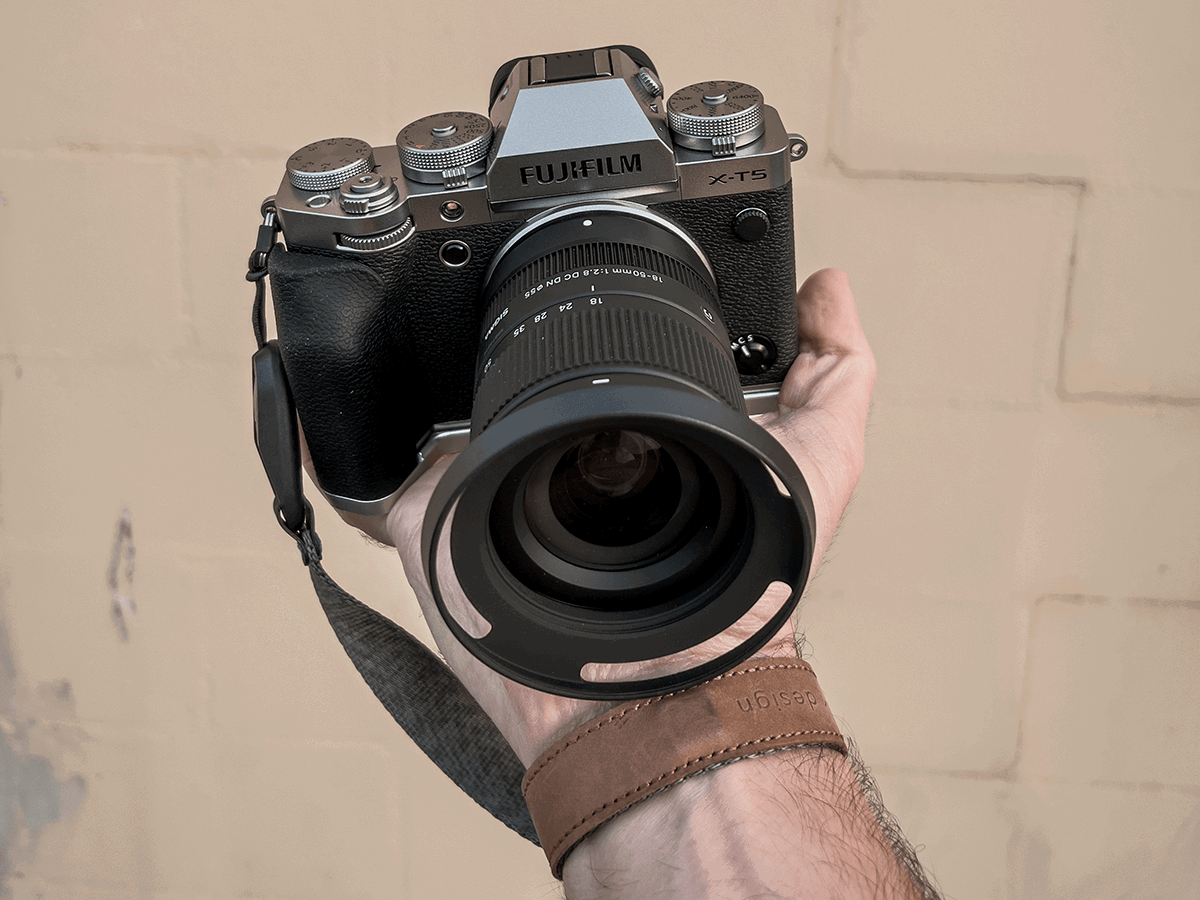
Conclusion: The Best Fujifilm Cameras
After looking at our list, you can see a full camera range that Fujifilm produces. It satisfies a wide range of different skills and genres in photography. They have everything from cutting-edge medium-format cameras to top-of-the-line point-and-shoot cameras.
Choosing the best Fujifilm camera depends on what you want. But Fujifilm has a history of excellent color management. So, almost any camera you pick will produce exceptional results.
The most crucial factor to consider is a camera’s shooting style. If you enjoy the slower shooting process, more similar to film 35mm film cameras than a DSLR, a Fuji camera is definitely for you. So, review our list and see which camera works best for you!
We’ve chosen the Fujifilm X-T5 as our top pick out of all these fine cameras. It’s an affordable entry-level APS-C camera with incredible features. If you’re a videographer, the X-H2 is the best pick. And on-location professionals who need a quality, medium-format camera can’t go wrong with the GFX100S.

